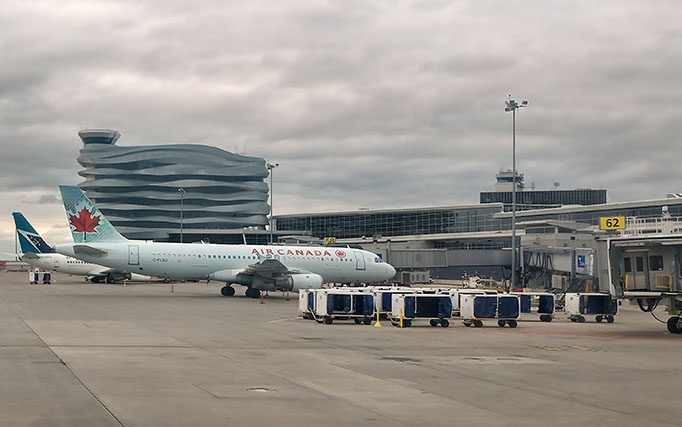Members’ Snapshot
When it first convened in 1867, the House of Commons had 181 Members. Today, that number has risen to 338 to keep pace with Canada’s growing population. Each Member of Parliament is elected to represent a constituency in the House. Just as Canada’s population has increased since 1867, so has the makeup of our nation’s constituencies and the Members elected to represent them, making today’s Parliament the most diverse in our history.
Move around the map to see the distribution of Canada’s 338 Constituencies.
Constituencies
Every one of Canada’s 338 constituencies (also called ridings or electoral districts) has a representative in the House of Commons. Each of these representatives—called Members of Parliament—provides a direct link between Parliament and Canadians by speaking to their constituents’ views and advocating on their behalf in the House of Commons.
- Find the Member of Parliament for your riding
- Find the address for your Member’s constituency office
Members of Parliament and their teams handle thousands of enquiries every year from constituents seeking access to federal government programs and services, including:
 Employment insurance
Employment insurance Disability pensions
Disability pensions Support for veterans
Support for veterans Passports and immigration
Passports and immigration
In addition, Members were very busy continuing to provide services in the context of the pandemic. Measures were put in place to ensure they could communicate effectively with their constituents and adapt their constituency offices to the situation.
Serving Canadians across the country
Canada is a vast country. Federal ridings vary not only in terms of size and population, but also in terms of the views, concerns and needs of each constituency. Members representing large and geographically complex constituencies face unique challenges because of the distances they span, an often atypical population distribution, and limited transportation and communication networks. In some constituencies, reaching constituents requires hundreds of kilometres of travel.
Recognizing the needs of larger and more remote constituencies
Members representing large or remote constituencies may require additional resources to offer the same level of service as their counterparts. A Geographic Supplement is currently added to 158 Members’ operating budgets in acknowledgement of the special needs of larger ridings covering an area of 500 km² or more. Also, Members who represent areas of the country where the transportation and communication infrastructures may be limited (there are 35 such constituencies listed in Schedule 3 of the Canada Elections Act, including the Yukon, Northwest Territories and Nunavut ridings) receive an additional supplement.


Members can rely on the support of employees in their constituency offices to help them perform a number of functions, such as:
- providing assistance and advice to constituents regarding access to federal programs and services;
- advocating for local interest groups;
- communicating the party’s policies and priorities (where applicable);
- playing an active community role and attending community events; and
- gathering information about the needs of their region and communicating these needs to government.
Supporting heavily populated areas
Urban ridings have their own particular concerns, such as high housing costs, varied socioeconomic conditions, and immigration or settlement issues.
Representing ridings with dense populations and diverse needs can be a tall order for Members and their constituency office staff. A graduated elector supplement is accordingly added to a Member’s operating budget when there are 70,000 electors or more on the final lists of electors for that Member’s constituency, as published by the Chief Electoral Officer after an election.


Redistribution of ridings
As populations move and change, the boundaries of Canada’s constituencies are revised to reflect this. In accordance with the Constitution and the Electoral Boundaries Readjustment Act, Canadian ridings are reviewed and adjusted after each decennial (10-year) census to reflect changes and movements in the population.
The last redistribution effort began in 2012, with data from the 2011 census, and resulted in a representation order that saw Canada’s total number of constituencies increase from 308 to 338. These new ridings came into effect in the first federal election called after May 1, 2014, the federal election of October 19, 2015. The next census is taking place in 2021.

What is an elector?
What is a constituent?
An elector is defined as any Canadian citizen 18 years of age or older on polling day. “Electorate” is the term used to identify a group of electors; the term can be used to define the electors of an entire country or the electors in a constituency. A voter is a person who has the right to vote and exercises that right.
The residents of a constituency also include new immigrants, permanent residents, and persons under the age of 18. While these individuals might not have the right to vote, they are still represented by the elected person and considered “constituents.”
About Members of Parliament
Members of Parliament, by the numbers
For more than 150 years, Members of Parliament have upheld the principles and practices of Canadian democracy by representing the citizens who elect them. But the face of Parliament is constantly changing.
As of March 31, 2021
Party standings
A party must hold at least 12 seats to be recognized as an official party in the House of Commons. Recognition means that the party receives funding for research and staff. It also means that the party can participate more fully in proceedings of the House and its committees.
Seats held by each political party in the House of Commons
As of March 31, 2021
154
120
32
24
3
5
Liberal Party of Canada
Conservative Party of Canada
Bloc Québécois
New Democratic Party
Green Party of Canada
Independent Members